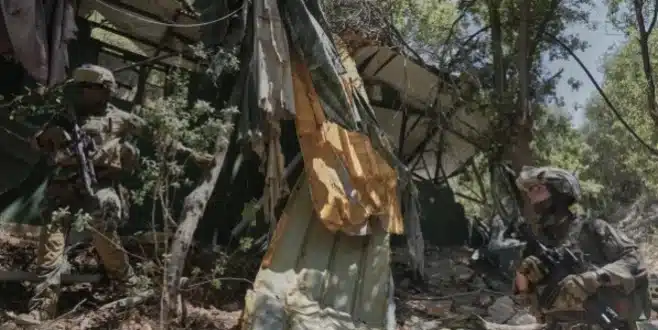Key Points
- Netanyahu welcomed Lebanon’s plan to disarm Hezbollah by end of 2025.
- Israel says it could reduce its troop presence if the plan is implemented.
- Hezbollah rejects disarmament until Israel withdraws and stops airstrikes.
- U.S. is pressuring Beirut to limit Hezbollah after a 14-month war.
- The 2023–24 conflict left over 4,000 dead and caused $11 billion in damage.
Israeli Prime Minister Benjamin Netanyahu on Monday praised what he called a “momentous decision” by Lebanon’s cabinet to begin the process of disarming Hezbollah by the end of 2025. He suggested the move could pave the way for Israel to gradually scale back its military presence in southern Lebanon, provided Beirut follows through.
Israel Offers Conditional Withdrawal
Netanyahu said Israel would respond to Lebanon’s steps with “reciprocal measures,” including a phased withdrawal of Israeli troops still stationed across five strategic hills in southern Lebanon. These positions, Israel argues, are essential vantage points protecting northern communities, many of which were evacuated during last year’s fighting.
The prime minister’s comments mark one of the clearest signals yet that Israel could reduce its footprint if Hezbollah is disarmed, though skepticism remains about whether either side will make concessions.
Hezbollah Rejects Disarmament
Hezbollah officials have dismissed Beirut’s disarmament timeline, insisting that Israel must first pull out of occupied Lebanese territory and halt its ongoing airstrikes. Since the U.S.-brokered ceasefire in November, Israel has carried out near-daily raids that have killed or wounded hundreds, most of them Hezbollah fighters.
The group’s leadership has vowed not to surrender its arsenal, arguing that the Lebanese government’s plan serves Israel’s security interests rather than Lebanon’s. Backed by Iran, Hezbollah maintains it plays a critical role in defending the country against Israeli aggression.
Pressure on Beirut and a Fragile Ceasefire
Lebanon’s cabinet decision comes under strong U.S. pressure to curb Hezbollah’s influence following the devastating 14-month war with Israel, which left the militant group significantly weakened. Many of Hezbollah’s senior political and military figures were killed, and its battlefield infrastructure suffered heavy damage.
Still, the ceasefire agreement leaves key ambiguities unresolved. It requires Lebanese authorities to dismantle unauthorized military facilities south of the Litani River but is vague about Hezbollah’s arsenal further north. Hezbollah insists the deal applies only to the southern zone, while Israel and Washington argue it mandates nationwide disarmament.
Background: War’s Toll and Regional Implications
The Israel–Hezbollah war erupted one day after the Hamas-led assault on Israel on October 7, 2023. Over 14 months of fighting, more than 4,000 people were killed, and damage across Lebanon and Israel was estimated at $11 billion. The conflict also displaced tens of thousands on both sides of the border and reshaped the regional security landscape.
Since the ceasefire, Hezbollah has withdrawn most of its fighters and heavy weaponry from the border areas south of the Litani River. However, Israel maintains that the group is attempting to rebuild its military capabilities, raising fears of another cycle of escalation.
What This Means Going Forward
Netanyahu’s conditional offer highlights both the opportunities and the obstacles ahead. While Israel frames Lebanon’s cabinet decision as a potential turning point, Hezbollah’s outright rejection suggests disarmament will remain one of the most divisive and destabilizing issues in Lebanese politics.
The months ahead will test whether the ceasefire can be strengthened into a lasting peace—or whether mistrust, continued airstrikes, and political deadlock will set the stage for renewed conflict.


